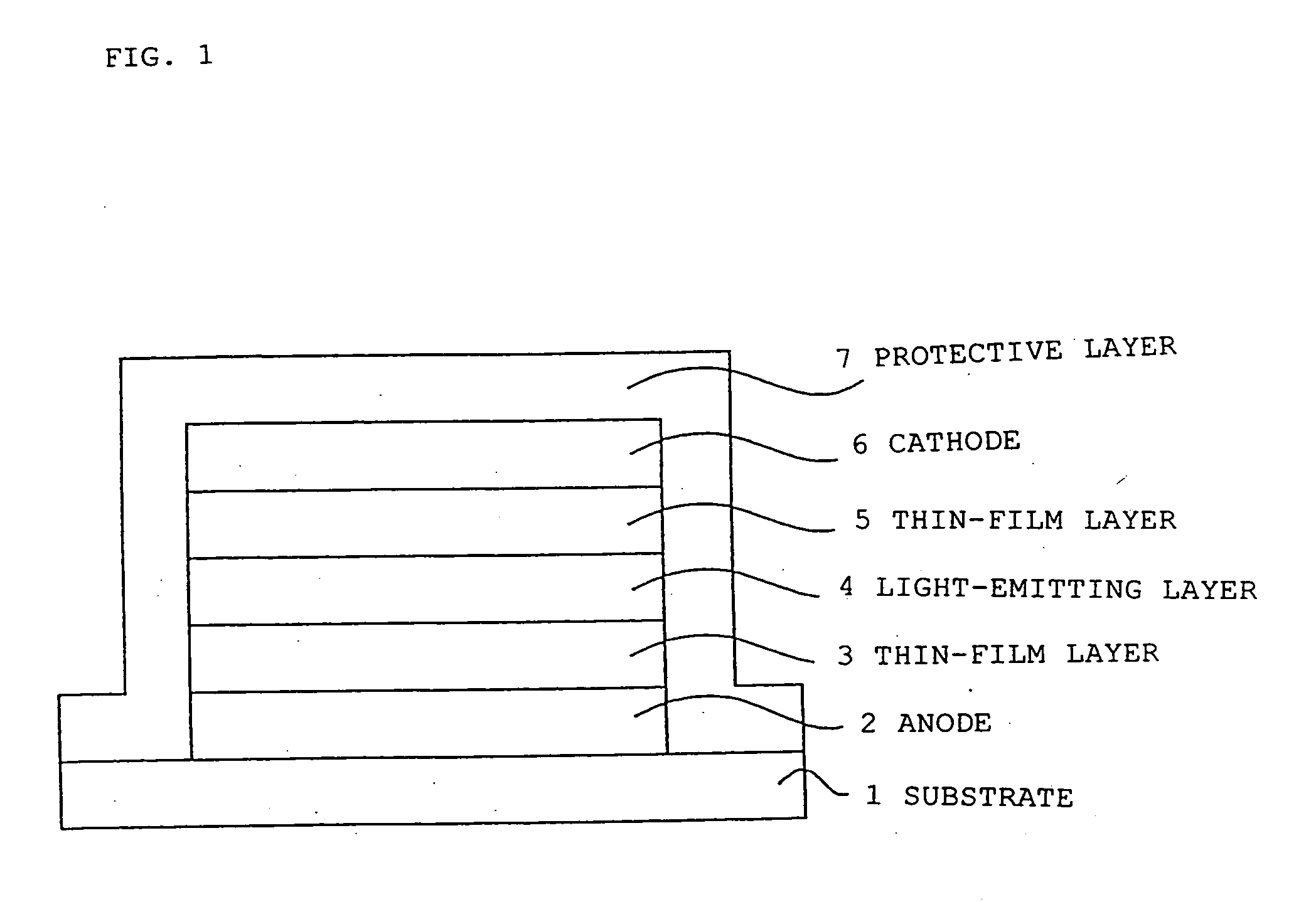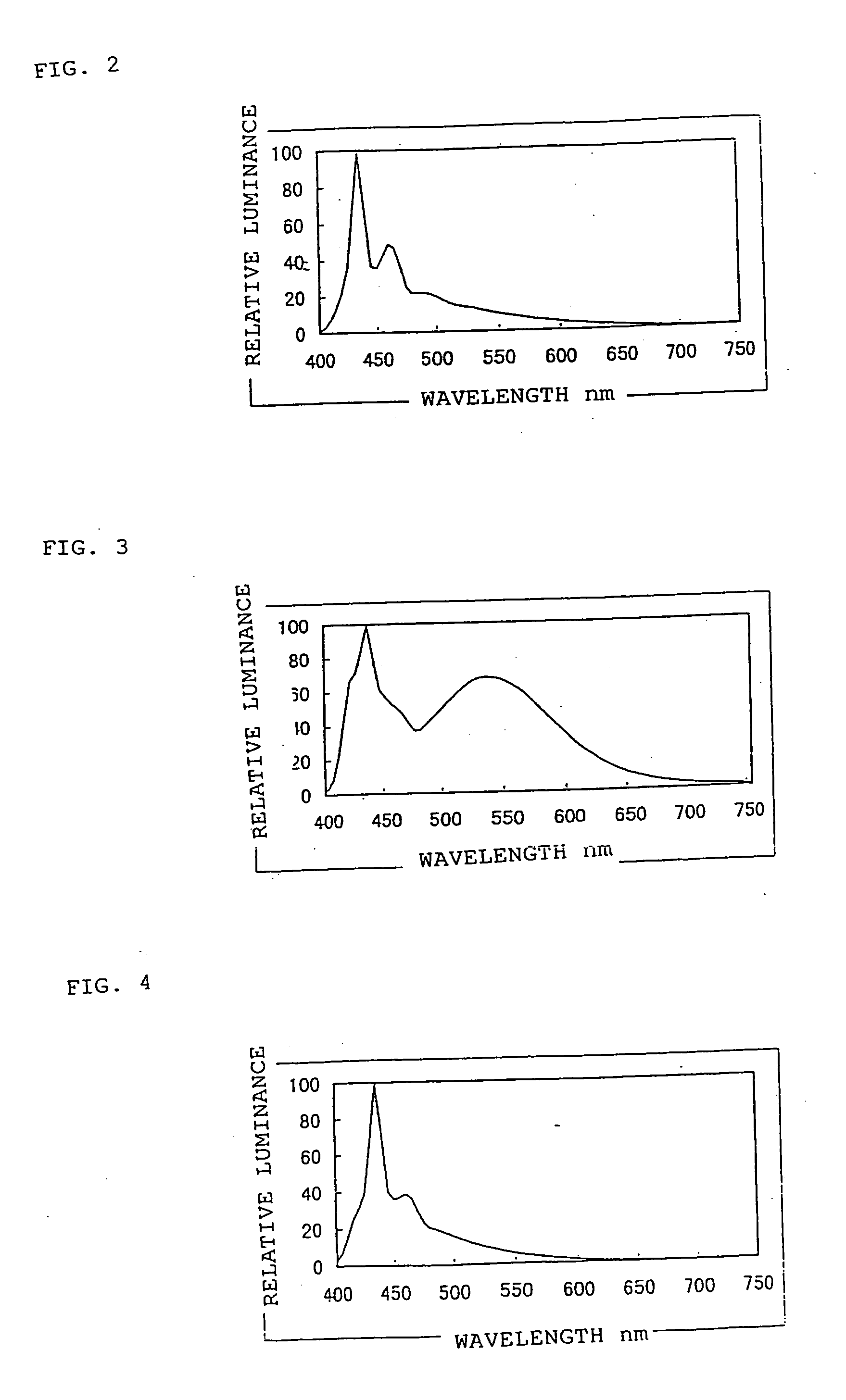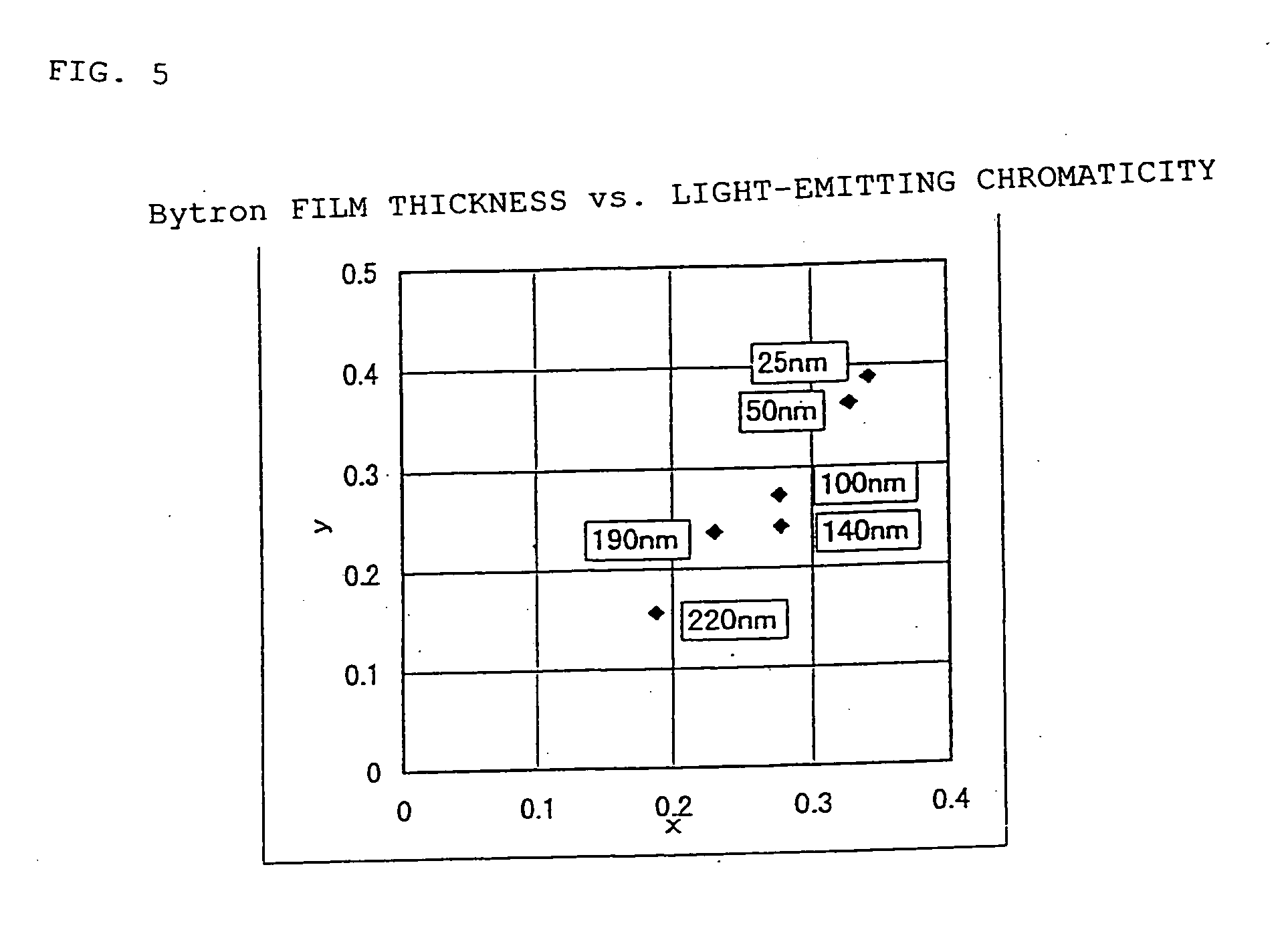Electroluminescent device having a thin-film layer, and electronic device having the electroluminescent device
a technology of electroluminescent devices and thin-film layers, which is applied in the direction of discharge tube luminescnet screens, organic semiconductor devices, natural mineral layered products, etc., can solve the problems of insufficient efficiency, display may be disabled, and the luminescent color shifts toward the longer wavelength side with current-application time, so as to achieve satisfactory efficiency and improve reliability. , the effect of satisfactory efficiency
- Summary
- Abstract
- Description
- Claims
- Application Information
AI Technical Summary
Benefits of technology
Problems solved by technology
Method used
Image
Examples
example 1
[0045] In an electroluminescent device having a structure provided with an organic polymer and disposed between two electrodes (anode and cathode), one of which is transparent, according to this Example, an example will be described in which the organic polymer emits light in the wavelength range between 400 nm to 600 nm, and a thin-film layer is disposed between the organic polymer and the cathode.
[0046] In FIG. 1, a cross-sectional view of the electroluminescent device of the present invention is shown. As a transparent electrode (anode), an indium tin oxide (ITO) film was formed on a transparent glass substrate 1 and was then patterned. Next, as a (positive) hole injection layer (transport layer) to be used as a thin-film layer 3, a 100-nm thick film composed of, for example, Bytron (Bayer AG) was formed by coating followed by drying thereof. Then, a xylene solution containing one percent of poly(dioctyl)fluorene was coated and dehydrated, and a 50-nm thick film thereof was obta...
example 2
[0058] In this Example, an example will be described, in which a fluoride or an oxide of an alkali metal; a fluoride or an oxide of an alkaline earth metal; or a fluoride or an oxide of a group III element in the periodic table, is used for the thin-film layer of the structure shown in FIG. 1.
[0059] Formation methods for layers other than the thin-film layer were the same as described in Example 1. As the thin-film layer 5, calcium fluoride film formed by deposition to a thickness of 2 nm was used. The light emission spectrum of the light-emitting device (blue light-emitting device) thus prepared is shown in FIG. 4. The light-emitting efficiency was 0.17 lm / W.
[0060] In this example, calcium fluoride was used by deposition as the thin-film layer; however, lithium fluoride may also be used. In addition, a fluoride or an oxide of an alkali metal, such as lithium, sodium, or potassium; a fluoride or an oxide of an alkaline earth metal, such as beryllium, magnesium, calcium, or scandiu...
example 3
[0061] In this Example, an example will be described in which poly(p-phenylenevinylene) or a derivative thereof is used as an organic polymer for the light-emitting layer. The structure of the Example other than an organic polymer layer (light-emitting layer) was equivalent to that of the light-emitting device described in Example 1.
[0062] As the light-emitting layer 4 (layer composed of, for example, an organic polymer) in FIG. 1, precursors of poly(p-phenylenevinylene) were coated and baked, and a 100-nm thick film was thereby obtained.
[0063] The light-emitting efficiency of the electroluminescent device thus prepared was 1.16 lm / W.
PUM
| Property | Measurement | Unit |
|---|---|---|
| wavelength range | aaaaa | aaaaa |
| thickness | aaaaa | aaaaa |
| thickness | aaaaa | aaaaa |
Abstract
Description
Claims
Application Information
 Login to View More
Login to View More - R&D
- Intellectual Property
- Life Sciences
- Materials
- Tech Scout
- Unparalleled Data Quality
- Higher Quality Content
- 60% Fewer Hallucinations
Browse by: Latest US Patents, China's latest patents, Technical Efficacy Thesaurus, Application Domain, Technology Topic, Popular Technical Reports.
© 2025 PatSnap. All rights reserved.Legal|Privacy policy|Modern Slavery Act Transparency Statement|Sitemap|About US| Contact US: help@patsnap.com



